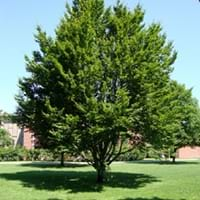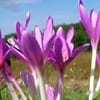Life Span
Perennial
Perennial
Type
Bulb or Corm or Tuber
Tree
Origin
Mediterranean, Turkey
North America, United States, Northeastern United States, Mid-Atlantic United States, Southeastern United States, South-Central United States, Texas, Canada
Types
Not available
Japanese beech, European beech
Number of Varieties
Not Available
Habitat
Lawn, meadows, Sunny Edge, Woodland Garden
low mountains, shaded woods
USDA Hardiness Zone
6-9
4-9
Sunset Zone
21,22
1a, 1b, 2a, 2b, 3a, 3b, 4, 5, 6
Habit
Clump-Forming
Oval or Rounded
Flower Color
Fuchsia, Rose
Yellow green, Tan
Flower Color Modifier
Bicolor
Bicolor
Fruit Color
Not Available
Sandy Brown
Leaf Color in Spring
Green
Green
Leaf Color in Summer
Light Green
Green, Dark Green
Leaf Color in Fall
Several shades of Green
Gold, Tan, Sandy Brown
Leaf Color in Winter
Light Green
Not Available
Leaf Shape
Long Broad
Lanceolate
Plant Season
Spring, Fall
Spring, Summer, Fall, Winter
Sunlight
Full Sun, Partial Sun
Full Sun
Type of Soil
Loam
Loam, Well drained
The pH of Soil
Acidic, Neutral
Acidic, Neutral
Soil Drainage
Well drained
Average
Bloom Time
Late Summer, Early Fall
Spring
Tolerances
Drought
Dry soil, Full Sun, Salt and Soil Compaction
Where to Plant?
Container, Ground, Pot
Ground
How to Plant?
Corms or bulbs, Seedlings
Seedlings, Stem Planting
Plant Maintenance
Low
Medium
Watering Requirements
Do Not over Water, Keep the ground moist but not water-logged
Needs very little water, occasional watering once established
In Summer
Lots of watering
Lots of watering
In Spring
Moderate
Moderate
In Winter
Average Water
Average Water
Soil pH
Acidic, Neutral
Acidic, Neutral
Soil Type
Loam
Clay, Loam, Sand
Soil Drainage Capacity
Well drained
Average
Sun Exposure
Full Sun, Partial Sun
Full Sun
Pruning
Cut or pinch the stems, Remove damaged leaves, Remove dead flowers, Remove dead leaves
Cut upper 1/3 section when young to enhancegrowth, Prune to control growth, Remove damaged leaves, Remove dead branches, Remove dead leaves
Fertilizers
All-Purpose Liquid Fertilizer, fertilize in summer
Compost, Fertilize the soil before planting
Pests and Diseases
Slugs
Aphids, Beech bark disease, fungus, Mildew, Scale
Plant Tolerance
Drought
Drought, Full Sun, Salt and Soil Compaction
Flowers
Showy
Insignificant
Flower Petal Number
Single
Not Available
Foliage Texture
Coarse
Medium
Foliage Sheen
Not Available
Glossy
Attracts
Bees, Butterflies
Bees, Birds, Hummingbirds, songbirds
Allergy
poisonous if ingested, Toxic if not prepared properly
Itchiness, Pulmonary oedema, Sinuses
Aesthetic Uses
Beautification, Cottage Garden, Showy Purposes
Showy Purposes
Beauty Benefits
Removes pimples
Speed hair growth, Stops hair loss
Environmental Uses
Air purification
Air purification, Shadow Tree, Wild areas
Medicinal Uses
Arthritis, Gout, Itching
Antioxidants, Antiseptic, Digestion problems, Headache, Kidney problems, Pain killer
Part of Plant Used
Bulbs, Flowers, Seeds
Leaves, Sap, Wood
Other Uses
Used as Ornamental plant, Used for its medicinal properties
Decorative veneers, flooring, paneling, Grown for shade, Used as firewood, Used as Ornamental plant, Used for its medicinal properties, Wood is used for making furniture
Used As Indoor Plant
No
No
Used As Outdoor Plant
Yes
Yes
Garden Design
Alpine, Container, Mixed Border, Rock Garden / Wall
Feature Plant, Shade Trees
Botanical Name
Colchicum autumnale
FAGUS sylvatica
Common Name
Autumn Crocus, meadow saffron, naked lady
European Beech
In Hindi
शरद ऋतु का पौधा
यूरोपीय बीच
In German
Herbstzeitlose
Rotbuche
In French
colchique d'automne
Hêtre commun
In Spanish
cólquico
Fagus sylvatica
In Greek
φθινόπωρο κρόκος
Ευρωπαϊκή οξιάς
In Portuguese
aftomn gema
Faia-europeia
In Polish
aftomn żółtka
Buk zwyczajny
In Latin
aftomn vitellus
Europae fagi
Phylum
Magnoliophyta
Magnoliophyta
Class
Liliopsida
Magnoliopsida
Family
Liliaceae
Fagaceae
Clade
Angiosperms, Monocots
Angiosperms, Eudicots, Rosids
Tribe
Colchiceae
Not Available
Subfamily
Not Available
Not Available
Season and Care of Autumn Crocus and European Beech
Season and care of Autumn Crocus and European Beech is important to know. While considering everything about Autumn Crocus and European Beech Care, growing season is an essential factor. Autumn Crocus season is Spring and Fall and European Beech season is Spring and Fall. The type of soil for Autumn Crocus is Loam and for European Beech is Loam, Well drained while the PH of soil for Autumn Crocus is Acidic, Neutral and for European Beech is Acidic, Neutral.
Autumn Crocus and European Beech Physical Information
Autumn Crocus and European Beech physical information is very important for comparison. Autumn Crocus height is 7.60 cm and width 7.60 cm whereas European Beech height is 800.00 cm and width 500.00 cm. The color specification of Autumn Crocus and European Beech are as follows:
Autumn Crocus flower color: Fuchsia and Rose
Autumn Crocus leaf color: Green
European Beech flower color: Yellow green and Tan
- European Beech leaf color: Green
Care of Autumn Crocus and European Beech
Care of Autumn Crocus and European Beech include pruning, fertilizers, watering etc. Autumn Crocus pruning is done Cut or pinch the stems, Remove damaged leaves, Remove dead flowers and Remove dead leaves and European Beech pruning is done Cut upper 1/3 section when young to enhancegrowth, Prune to control growth, Remove damaged leaves, Remove dead branches and Remove dead leaves. In summer Autumn Crocus needs Lots of watering and in winter, it needs Average Water. Whereas, in summer European Beech needs Lots of watering and in winter, it needs Average Water.





